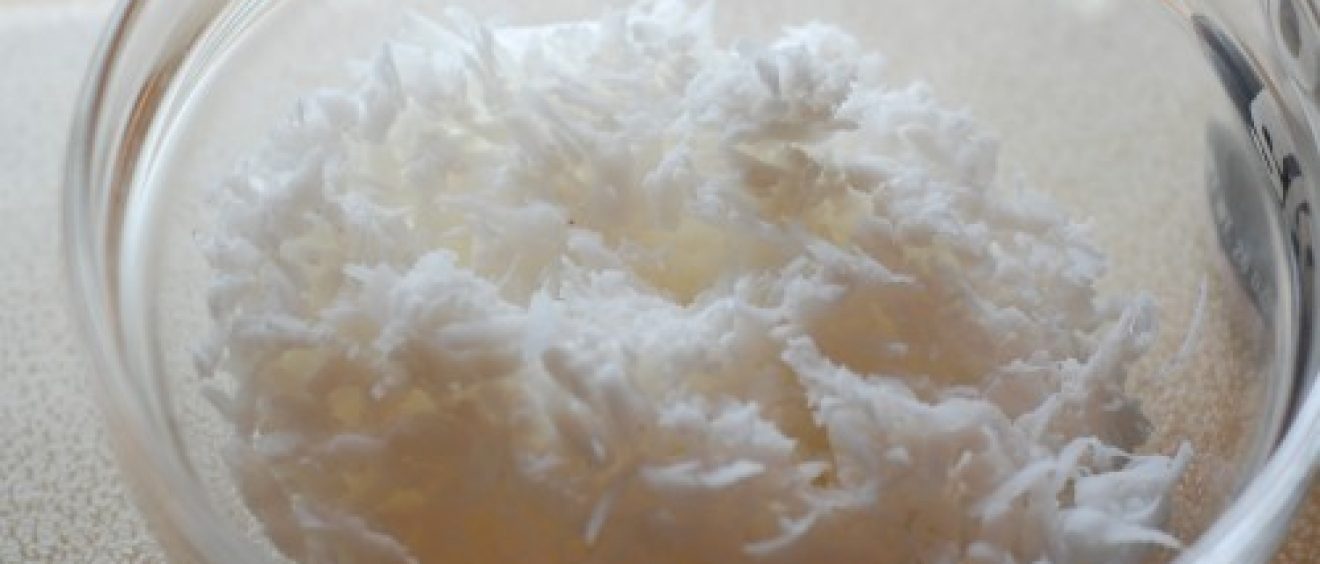
Friday Fuck Up: Ice Cream Epic Fail
My husband and I, upon our first foray to a large farmer’s market near our new house, decided on a whim to buy a whole coconut. So exciting! So tropical! The adventure we had opening the coconut and eventually eating it made me think of other odd fruits and veggies that people eat and love – artichokes being my personal favorite. Who ever thought, back in the day, these things were edible? Why put forth such effort to get to the wonderful taste inside? But I digress. After the initial excitement wore off, and we had nibbled on a little bit of coconut meat, it now fell upon me to figure out what to do with the bulk of the coconut meat and the water.

It being August, and living in a house with no central air, my mind automatically went to ice cream. I don’t have a stand-alone ice cream maker, but I do have an ice cream maker attachment that came with my beloved KitchenAid mixer. I’ve attempted ice cream before, to utter disappointment. The problem originated from the fact that I don’t want to make normal ice cream. I want to make soy cream. We’re a lactose-intolerant household around here, and my first attempt at soy ice cream, back around Thanksgiving, used soy milk and tofu, and ended up an icy, non-creamy concoction that I threw out. This time, I thought I’d do a hybrid, taking a regular recipe and putting half dairy, half soy in it instead, along with the great goodness of the coconut meat and water – it was bound to be tasty….Right?
I used all the basic ingredients and basic format for making ice cream. Salt, sugar, cream (I used a mix of whole milk, soy milk, and coconut water), egg yolks, and shredded coconut. Heat up the non-egg ingredients, add slowly to the egg, then cool. Once cool, put it frozen ice cream attachment and have at the mixing. Here’s what it looked like at the end.
I knew at this point that something was wrong – why was it so yellow? Unfortunately, the taste confirmed that this ice cream was all wrong. Although my husband ate it happily, it was way, way too eggy. The texture was better than my first ice cream attempt, and had the consistency of ice cream, but tasted too much of egg, and too little of coconut.
So I call upon you, dear reader, for assistance…what’s the secret to getting the texture of ice cream right without making the flavor too eggy? And does anyone have a great recipe for soy cream? I think my next attempt with my ice cream attachment might be sorbet – that way, I avoid the cream dilemma altogether.

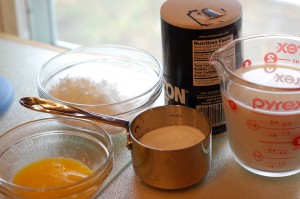
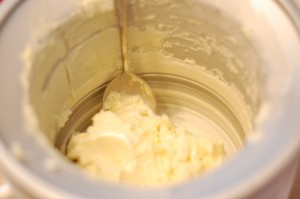

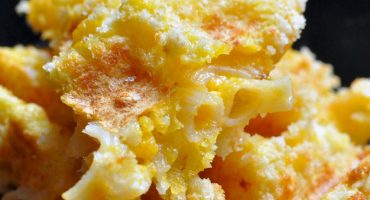
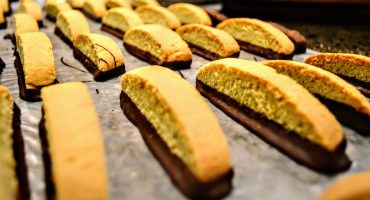
I think the eggs weren’t actually necessary here. I’m saying this based on the fact that I never knew how to separate an egg until I was 18, and we made ice cream at home fairly frequently, so I’m pretty sure we must not have used eggs. Also, I think for coconut ice cream, the eggs would be such a much stronger flavor that they would just naturally take over the dish. Maybe taking out the eggs and using coconut milk or coconut cream instead of coconut water would do the trick? Wikipedia actually tells you how to make coconut cream from fresh coconut – http://en.wikipedia.org/wiki/Coconut_cream
Also here’s a link to a bunch of vegan ice creams – I’ve made a chocolate mousse much like the chocolate ice cream here that turned out really great. http://vegweb.com/index.php?board=243.0
Eggs are always in traditional ice cream. I actually think the problem is that you didn’t reheat the custard — well, actually there’s two problems with that. To thicken the custard, you have to get the overall temperature of the liquid to 160-170 degrees Fahrenheit. You basically are firming up the eggs, and you have to heat it slowly to this temperature. Don’t go too far on temperature or you will have scrambled egg-soy-coconut-milk. The ice cream will not work out to a proper consistency without making a true custard (which is why you are using eggs to begin with). ALSO — HUGELY important. The eggs *must* be heated to 160 degrees Fahrenheit to avoid any possibility of food safety issues.
You had the right idea, you do add some of the heated mixture (though it shouldn’t be too hot) to the eggs to temper them, but then that all goes back into a slowly heated pan from low to whatever setting on your stove gets you to 160-170 (the higher you go the thicker your custard). Also, from my experience, I would recommend that you chill the heated custard in a ice bath first, to stop it from cooking, and then transfer to the fridge for a full 24 hours. Your Kitchen Aid bowl needs to be frozen for 24 hours too (even though that’s more conservative than the directions).
Beware of using a metal object in your Kitchen Aide ice cream freezer!! It is easy to puncture the metal that houses the freezing liquid, and if you do that, you are sunk and out of ~$100!
As a last bit of possibly help with flavor — I would try making your own coconut extract (put coconut shreds in a glass bottle, add vodka, wait a few days for the coconut to dissolve — it’s kind of cool). Add this while cooling everything down…and taste as you go along. You will surely get coconut flavor from that!!